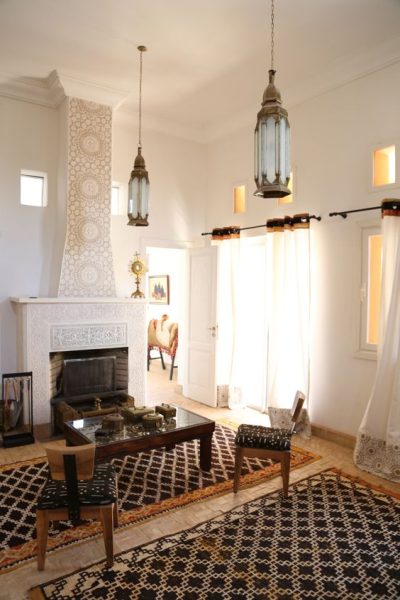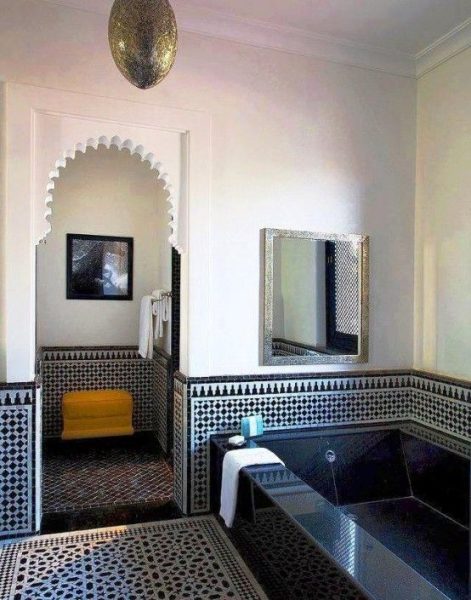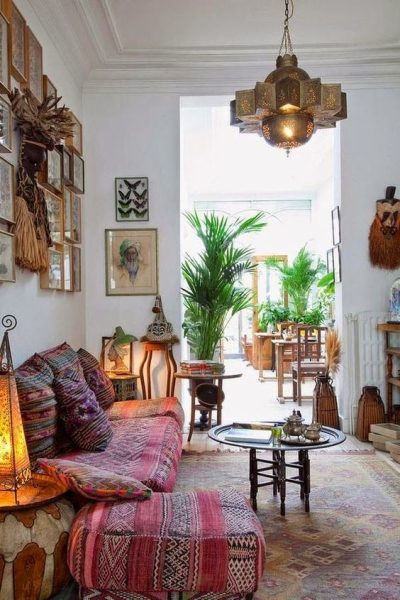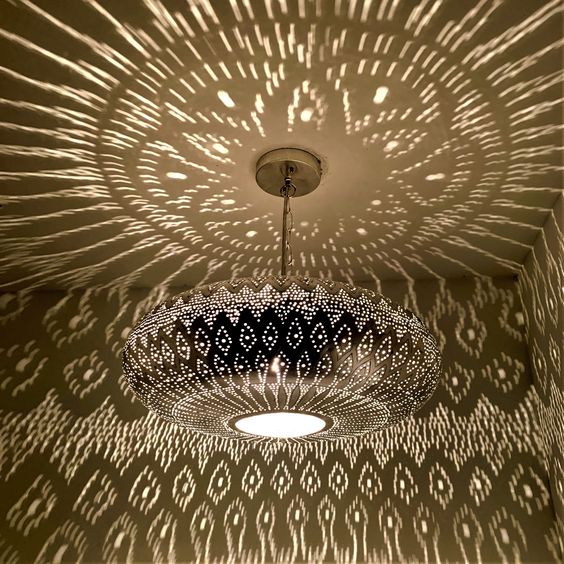Moroccan Interior Design
Moroccan interior design first became mainstream in the 60s when affluent hippies were traveling and brought the interior design style of Morocco to the West. Contrary to popular belief, Moroccan interior style doesn’t just come from Morocco. It also takes influence from Spain, France, Arabia, and Portugal. This interior design style is all about color, texture, fluid lines, and most importantly, comfort. It can be considered elegant, exotic, luxurious, and dramatic all at once. Moroccan design steers away from harsh lines and edges, it’s all about comfort. The design elements are very intricate, colorful, and textural. Drawing inspiration from shapes and colors from the desert, Moroccan interior design has become a new favorite in homes.

When it comes to color, think bold. Incorporate colors like fuchsia, royal blue, deep purple, red, yellow, and green. Don’t think it’s all about bright, bold colors, remember this interior design style takes inspiration from the desert. More soothing colors like tope, beige, and shades of white should also be considered as part of the mix. A bold slat accent wall is an easy way to add these more natural colors while creating texture in a space. Open courtyards or backyards with beautiful water fountains and lots of greenery are a major part of this design style.

In this interior design style, patterns are key. Patterns are one of the most essential parts of Moroccan interior design. Some of the most popular patterns you will see use zellige tiles to create geometric and tribal looks. Tribal print also comes out in rugs, which can be pricy if you look for authentic Moroccan rugs. If you’re on a budget look at places like Boutique Rugs.
Comfort is also an important part of Moroccan style. Most furniture you will find in Moroccan style homes sits low to the ground to promote a comfortable lifestyle. You will find a lot of furniture with intricate patterns made from inlaid tile designs or pearl to create contrast. Overstuffed ottomans are often used in living rooms as additional seating and add to the overall comfortable feel that Moroccan style has.

One of the most distinctive aspects of this look is the lighting that’s used. Moroccan interior design often uses different types of metals, brass, copper, silver, and gold as light fixtures that have different patterns cut out of the metal. This style creates beautiful patterns on walls at night when the light shines through, it feels truly magical.

For more tips and home inspiration, follow us on Instagram, Pinterest and Facebook! @WeAreWoodgrain